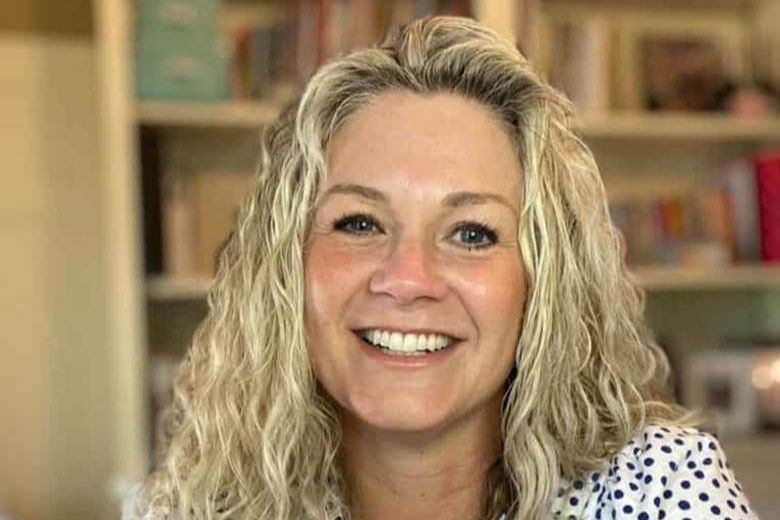Six Questions with Laurie Ann Thompson
- Mary Boone

- Apr 4, 2023
- 3 min read

Laurie Ann Thompson grew up in the fields and forests of rural northern Wisconsin but now makes her home between the mountains and the sea in western Washington state. A naturalist as well as a former software engineer, she writes to help her readers—and herself—better understand the world we all share. Laurie is the author of several award-winning nonfiction books, including Emmanuel’s Dream, winner of the ALA Schneider Family Book Award. Learn more at http://lauriethompson.com.
1. What kind of student were you? What were your favorite subjects?
It probably comes as no surprise, but I loved school! My favorite subject was math, because I liked knowing when I'd reached the end and being able to check my answers. You certainly can’t do that with writing! But I always loved writing, too: stories, poems, even research papers (okay, especially research papers). In college, I majored in applied mathematics with a technical writing minor. I feel like writing for kids offers me the best of both worlds: the puzzle-solving element and logical, methodical appeal of mathematics, plus the creativity and expressiveness of writing.
2. What do you feel you’ve gained from being a part of the children’s writing community?
Wow. So much! The children’s writing community is fantastic. I’ve found mentors, colleagues, cheerleaders, and, most importantly, friends. I am introverted, shy, and somewhat face-blind, which I realize can make me seem aloof in many settings. Joining new groups can be really challenging for me. Somehow, the children’s writing community has always made me feel welcome. Everyone is so genuinely curious, kind, and supportive. I feel like this industry attracts the best possible kind of people, and they inspire me to be a better human, which I truly appreciate. Writing is a hard, solitary business, but kidlit folks more than make up for it!
3. Do you ever get stuck creatively? If so, how do you get unstuck?
Yes, all the time! I like to walk outside in nature. I try to be present, focusing on observing and noticing. I try not to think about my project, but a new idea will usually bubble up when I least expect it! If that doesn’t work, I’ll switch gears and work on a different project for a while. I like to have several different works in progress for this very reason. I’m usually working on a few picture books—fiction and nonfiction—plus a longer piece, all at the same time. Fortunately, I have a lot of ideas and am always thinking of more, so I’m in no danger of running out of material!

4. How was the editorial process for these new books? Did you do any revisions? Did you have a lot of collaboration with the illustrator?
These books were an absolute dream to work on, and the entire process was highly collaborative! Even the initial idea, for YOU ARE A HONEY BEE!, was given to me by someone else. I researched, wrote a draft, and got feedback from my agent. After a major revision, my manuscript went to the illustrator, Jay Fleck, who did some sample illustrations so we could submit it as a package. When I saw the interactivity he’d added, I revised once more. Working with the team at Dial has been fantastic. We’ve had several rounds of revision for both text and art for each book, and each one has been a joy. Everyone who touches each book—our editor, art director, copy editors, publicist, and more—brings it to a whole new level, and I’ve been blown away by the care and creativity that has gone into each step of the process.
5. If you read these books to a room filled with kids, what message would you want them to leave with?
I’m hoping for two big takeaways. Firstly, that wonder is all around us. Honey bees and raccoons may feel very familiar, but if we look closer, we see how extraordinary they truly are. I think even adult readers will learn surprising facts in every book—I know I did while researching! Secondly, I hope readers are left with a sense of connection to the natural world and to each other. While the books show what makes the animals unique, they also show that we all grow and change, we all have families, we all need to eat, we all want to be safe, etc. I hope that seeing these similarities inspires stewardship and empathy.
6. Who should read these books?
The ideal readers would be active preschoolers or early elementary students who love animals, nature, and pretend play. Part of the fun of this series is that they encourage young readers to act out what the animals are doing, so I hope kids will get up and get moving while they’re being read to. And I hope they’ll have so much fun while doing it that they don’t even realize how much they’re learning along the way!




These books sound great for me to use as a speech therapist! (And therefore parents too) I imagine there are lots of great VERBS for the kids to act out, (preschoolers with language delay often lack verbs) AND having them act out the book will teach them the valuable skill of making a movie of the book, which is essential for 1-2nd grade..... READING COMPREHENSION! Thank you for helping our young kids!